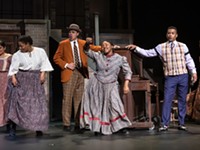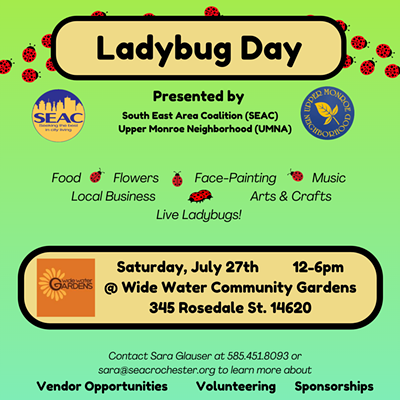ART: "Family Gathering: A Look Into the World of Eating Disorders"
consumed by misplaced guilt
By Rebecca Rafferty @rsrafferty[
{
"name": "500x250 Ad",
"insertPoint": "5",
"component": "15667920",
"parentWrapperClass": "",
"requiredCountToDisplay": "1"
}
]
Eating disorders, along with alcoholism and other addictions, have a precarious place in the realm of disease. The afflicted person is often viewed as selfish, at fault, and the antagonist of the family, rather than a suffering body and mind strongly governed by dependence on substance or ritual. Those who have such a person in their social group are perhaps more aware of the tangle of complications surrounding the disorder. Artist Joy Christiansen fights the mentality surrounding eating disorders in an interactive exhibit currently at the U of R's Hartnett Gallery.
Like so many medical and psychological anomalies, an explosion of attention was paid to eating disorders when people first began to recognize their existence. But in a culture that idolizes too-thin celebrities, with "average" clothing sizes shrinking by the decade, unhealthy body image has rapidly become the norm. And in our miracle-diet-pill, exert-no-effort society, very little attention is paid to the mental and emotional work that needs to be done in order to repair the roots of the problem. Individuals are left starved for emotional connection, and with a distorted sense of the value of their lives and self worth. What then becomes of the quality of life at home, when cultural pressure reigns in opposition to health and familial support?
In an endeavor to reflect on the apparent versus the unseen tensions in the lives of the disorder-afflicted, Christiansen transformed the triangular space of the Hartnett into a family room, hosting multiple domestic stories, but one in which the furniture and objects testify to the secret and painful nature of life within those walls. The space is clean and cozy at first glance, but suddenly and disturbingly a sense of stale and cold isolation creeps in. A few chairs, a couch, a desk, a bookcase, a china cabinet, tables, and more, are neatly arranged, but awkward in that three-sided room, and spaced at such great distances from one another. Then viewers notice the pictures of despondent-looking people printed onto the furniture's fabric, and their personal testimonials, collected through interviews by the artist, which are embroidered over the images. These pleas for awareness and fear of judgment begin to whisper to the viewer; the messages of confusion, frustration, and powerlessness are issued not only from the people with the disorders, but also by family members and friends. We are privy to the breakdown of order and of control, on multiple levels.
Heightening the sense of isolation, most figures are printed alone; only the couch features two women at opposite ends, adamantly curled away from one another. In reading the messages, the viewer gains a sense that blame and resentment are flying about like blind arrows, and very little trust exists between family members. One mother treats her daughter's bulimia as "a separate entity living in [their] home," while her daughter feels that she is being punished for her desperate scramble to fit in. In another story, an adult daughter expresses weary sorrow for her dashed hopes that her mother, anorexic for nearly 30 years, would share a meal with her at her wedding reception. In a lone armchair in the farthest corner, a man with averted eyes fears "being accused of being too nosey," and though continuously hurt and pushed away while trying to be supportive, states that "through the ups and mainly downs, [he] wouldn't change [their] relationship." It's unclear if he is referring to his wife or daughter.
Gradually, the whispers become shouts as more and more messages surface. Heeding signs posted by the artist that encourage the audience to interact, I wandered from object to object, pulling the cord on lamps to illuminate text on the shades (as she observes her emaciated form in old photographs, a woman expresses incredulous fury that no one ever tried to help her), peering into the china cabinet (forlorn faces printed on plates mirror our own, staring into the empty dishes), and sorting through stacks of embroidered throw pillows to read the text. Off by itself, a college student's desk stands immaculately organized, but upon noticing the words "a moment on the lips, a lifetime on the hips" scrawled half-hidden at the bottom of a paper-clip container, I realized there was probably much more to discover. The opening of each drawer revealed a photo of a nude woman curled away, exposed but defending in a fetal position, surrounded by a scribbled diary-confessional on every interior surface of the drawers. Reading the words of shame felt like happening upon something overwhelming, more than I could handle, which I believe is precisely the point.
What is a body to do when it has a negative relationship with a substance that it cannot avoid? This question is put to the audience by an anonymous viewer of the show, who posted it on the response wall provided by the artist. The fact that food is our necessary fuel complicates anorexics' and bulimics' ability to steer clear of the object of the disease. Another viewer expresses that she is torn between fostering the tremendous talent of her dance student, and the realization that her student will not be able to kick her disease while remaining a dancer. As with any complicated social issue, we all have to own our part in it (society and culture are made of us, we perpetuate or alter its course), and work to keep communication open. Christiansen's show offers both a valuable examination and a venue for discussion.
Family Gathering: A Look into the World of Eating Disorders
Through April 2
Hartnett Gallery, University of Rochester, WilsonCommons, River Campus
275-4188, www.sa.rochester.edu/hartnett
Speaking of...
Latest in Art
More by Rebecca Rafferty
-

Beyond folklore
Apr 4, 2024 -

Partnership perks: Public Provisions @ Flour City Bread
Feb 24, 2024 -

Raison d’Art
Feb 19, 2024 - More »








